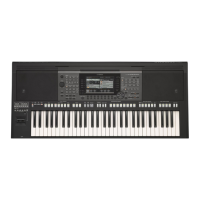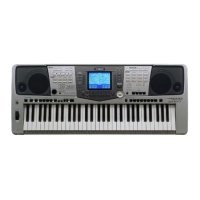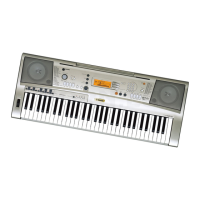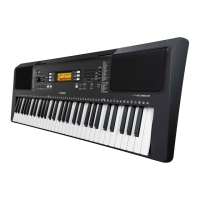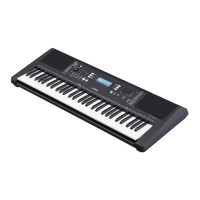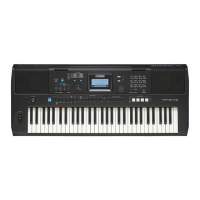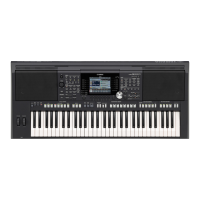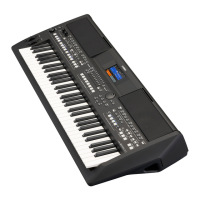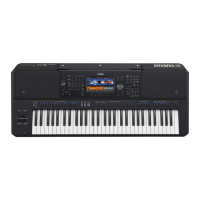70 PSR-A5000 Reference Manual
When re-recording a specific section of an already-recorded MIDI Song, use the Punch In/Out function. In this
method, only the data between the Punch In point and the Punch Out point is overwritten with the newly recorded
data. Keep in mind that the notes before and after the Punch In/Out points are not recorded over, and you will hear
them play back normally to guide you in the Punch In/Out timing.
1 On the MIDI Multi Recording display, select a Song to be re-recorded, and then press the
[EXIT] button to return to the Multi Recording display.
2 Touch [Start/Stop] to call up the operation display.
3 Set various parameters, such as how the Recording starts/
stops and the Punch In/Out position.
Re-recording a Specific Section—Punch In/Out (Realtime Recording)
The parameters here cannot be set while
recording.
NOTE
Rec Start Determines the recording start behavior.
• Normal: Overwrite recording starts when Song playback is started via the [>/o] (Play/
Pause) on the MIDI Multi Recording display or when you play the keyboard in the Syn-
chro Standby mode.
• First Key On: The Song plays back normally, then starts overwrite recording as soon as
you play the keyboard.
• Punch In At: The Song plays back normally up to the beginning of the beginning of the
“Bar” (measure) specified here, then starts overwrite recording at that point.
Rec Stop Determines the recording stop behavior, or how data is handled after recording is stopped.
• Replace All: This deletes all data after the point at which recording is stopped.
• Punch Out: The Song position at which recording is stopped is regarded as the Punch Out
point. This setting maintains all data after the point at which recording is stopped.
• Punch Out At: Actual overwrite recording continues until the beginning of the “Bar”
(measure) specified here, at which point recording stops and normal playback continues.
This setting maintains all data after the point at which recording is stopped.
Pedal Punch In/Out When this is set to “On,” you can use Foot Pedal 2 to control the Punch In and Punch Out
points. While a Song is playing back, pressing (and holding) Foot Pedal 2 instantly enables
Punch In recording, while releasing the pedal stops recording (Punch Out). You can press
and release Foot Pedal 2 as often as you want during playback. Note that the current function
assignment of the center pedal is cancelled when the Pedal Punch In/Out function is set to
“On.”
Pedal Punch In/Out operation may be reversed depending on the particular pedal you’ve connected to the
instrument. To remedy this, try changing the pedal polarity (page 104).
NOTE

